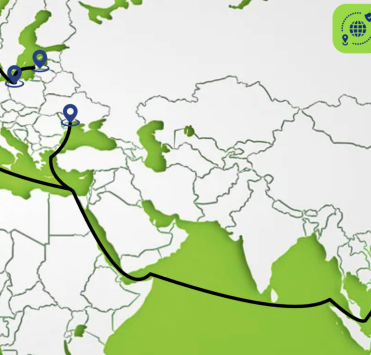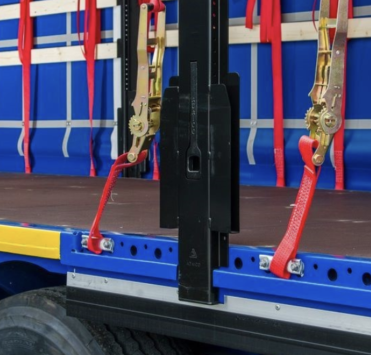Specifics of customs clearance of goods in Ukraine: rules, stages, documents

Customs clearance of goods in Ukraine
Customs clearance in Ukraine is governed by a set of rules and regulations that dictate the process of documenting the legality of the movement of goods across the state border. This process, also known as customs clearance or customs declaration, is an integral part of foreign trade activities.
To ensure compliance with customs legislation, individuals and legal entities involved in the import of goods into Ukraine must comply with certain rules and procedures established by the customs authorities.
The main stages of customs clearance generally include:
- Acceptance of the customs declaration for customs clearance
- Processing of the customs declaration
- Control through the customs system
Understanding and following these steps is crucial for a smooth and efficient customs clearance process, as each step plays an important role in verifying the legality and authenticity of imported goods.
Stages of customs clearance in Ukraine
The stages of customs clearance in Ukraine are accompanied by a set of necessary documents that individuals or legal entities must submit to the customs authorities. These documents serve as proof of the nature, value and legality of the imported or exported goods and play an important role in the customs clearance process.
The main documents required for customs clearance in Ukraine include:
- Invoice
- Packing list
- Consignment note (CMR), bill of lading or air waybill
- Certificate of origin
- Insurance documents
- Customs declaration
The accuracy and completeness of these documents are crucial for successful customs clearance and to avoid delays or complications in the process. SAVE PRO SOLUTIONS LLC offers comprehensive customs clearance services, assisting clients in preparing and submitting the necessary documentation for efficient customs clearance.
In Ukraine, the customs clearance of goods is subject to certain timeframes and requirements depending on the type of goods and their intended use within the country.
For example, goods intended for humanitarian aid may be subject to a different clearance procedure than commercial imports or exports. Understanding the specific rules, registration procedures, and documentary requirements for different types of goods is essential to efficiently navigate the customs clearance process. In addition, the cost, timing and duration of customs clearance may vary depending on the nature of the goods and the specific customs regime under which they are imported or exported. Proper preparation, documentation and compliance with customs regulations are key factors in ensuring a smooth and compliant customs clearance process in Ukraine.
Customs clearance for export and import cargo
Imports and exports are subject to certain customs duties and taxes during customs clearance in Ukraine. The rates and rules governing these duties may vary depending on the type of goods, their value and applicable trade agreements. In import transactions, importers are required to pay duties and taxes based on the classification and valuation of the imported goods.
On the other hand, exporters may benefit from certain customs regimes that allow for expedited processing of export shipments without the need to pay customs duties. Understanding the intricacies of customs duties and taxes is essential for businesses engaged in international trade to ensure compliance and cost-effectiveness.
During the customs clearance of export and import cargo in Ukraine, goods are inspected and subsequently released for transport. The purpose of the customs inspection is to verify that the goods declared in the documentation correspond to the physical cargo being transported and comply with the relevant rules and restrictions. After a successful inspection, the customs authorities authorize the release of the goods, allowing them to proceed to their destination. The stages of customs clearance for exports typically include document preparation, customs clearance, inspection and transport by various modes of transport, such as sea, groupage, rail or air. Efficient customs clearance procedures facilitate the smooth movement of goods across borders, promoting international trade and commerce.
The process and timing of customs clearance of imports and exports
When it comes to customs clearance of imports into Ukraine, the process begins with the submission of a declaration and other required documents as specified in the Customs Code. These documents can be submitted both in paper and electronic form. The required documentation usually includes the following details:
- A completed customs declaration form.
- A registration card of the foreign economic operator.
- A commission agreement concluded with a customs specialist (broker).
- Calculation of transport costs.
- Contract for foreign economic activity.
- Waybills for transportation.
- Quality certificates confirming the origin of the goods.
- Commercial documents.
- Accounting documents for determining the customs value of the cargo.
- Receipts for payment of customs duties.
If available, certificates providing tax benefits.
For exports from Ukraine, the customs clearance process involves a different set of requirements and procedures. In order to obtain an export license, a simpler list of documents must be submitted to the Ministry of Economy, which mainly consists of an application.
Innovations in customs clearance have introduced tax and customs benefits for certain goods, including alcoholic beverages, aimed at optimizing the export process. It is crucial for businesses engaged in export activities to be aware of the customs regimes applicable to their goods to ensure a smooth and compliant export process.
Customs clearance in Ukraine involves not only the submission of documentation, but also the physical inspection and release of goods. The inspection and release process can vary in duration: some shipments are cleared in as little as 15 minutes, while others may face delays of several months.
The law sets specific timeframes for customs clearance; however, external factors such as the nature of the goods, compliance issues or procedural delays may affect the timeframe for customs clearance.
It is important for businesses engaged in import and export activities to understand the rules governing customs clearance in Ukraine in order to avoid possible delays and ensure the efficient movement of goods across borders.









